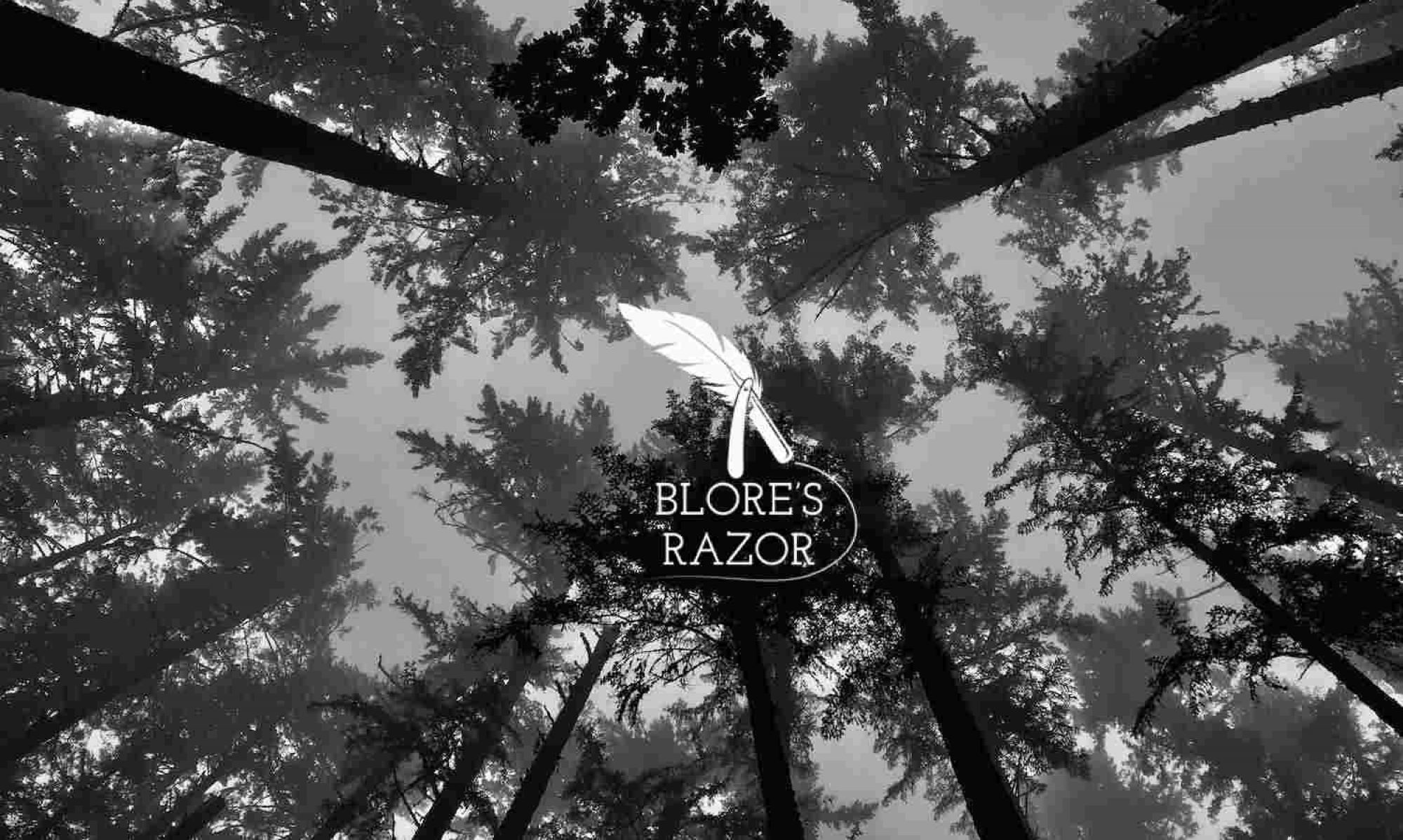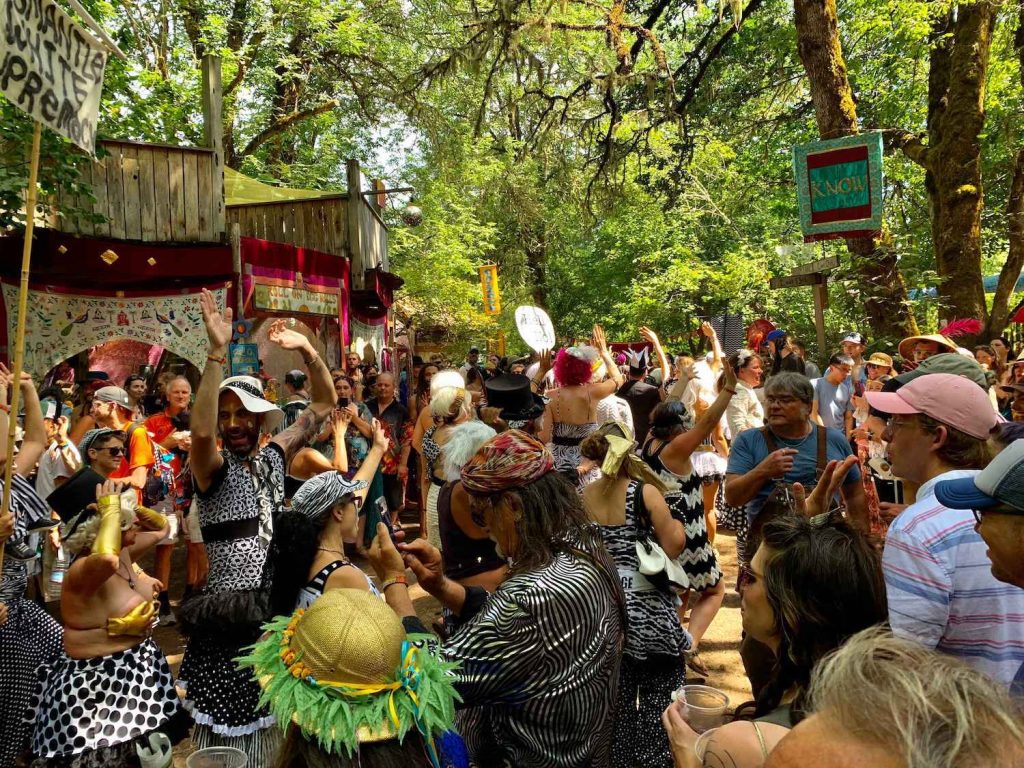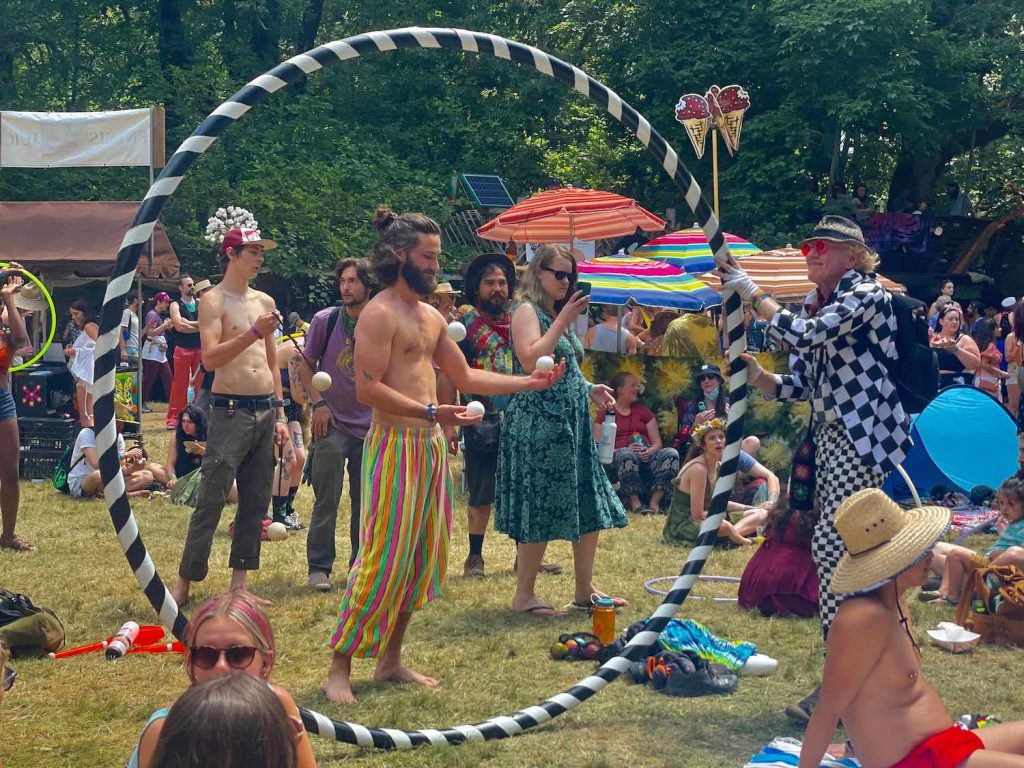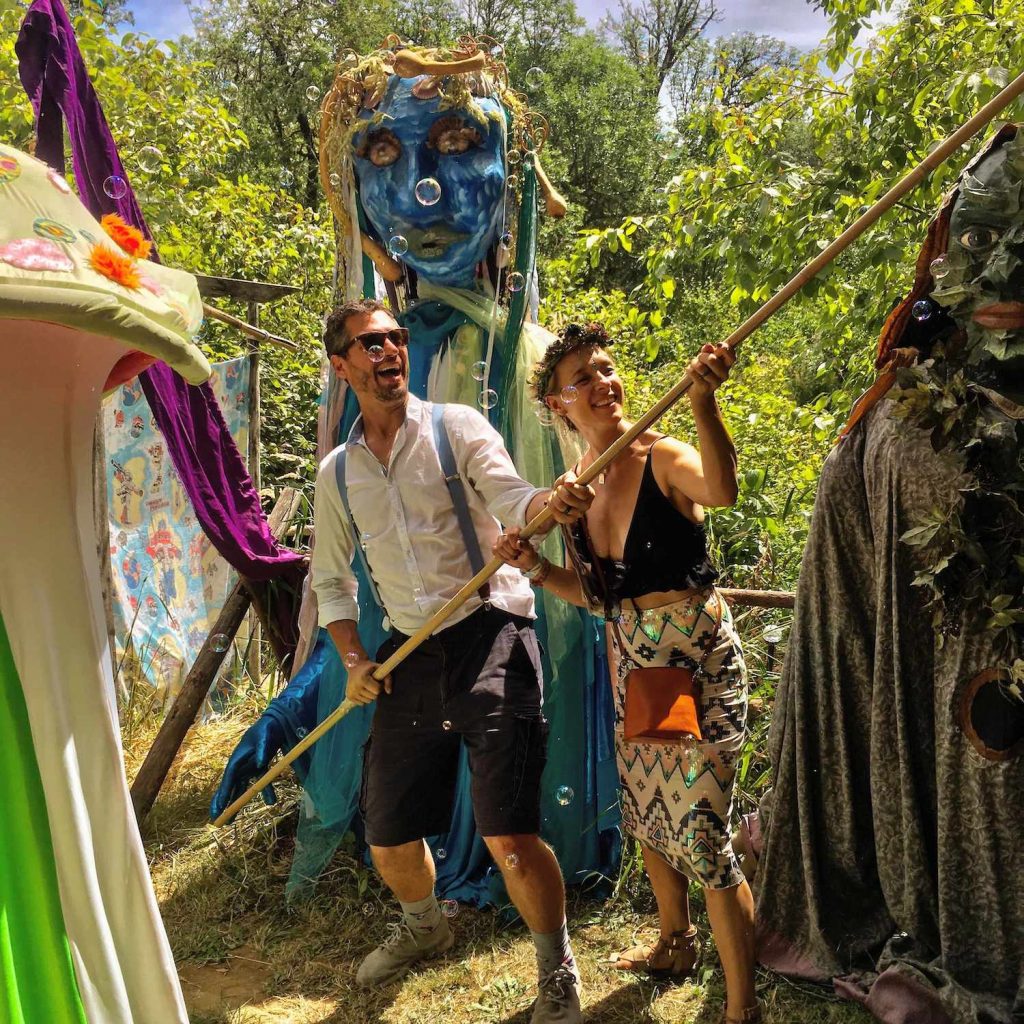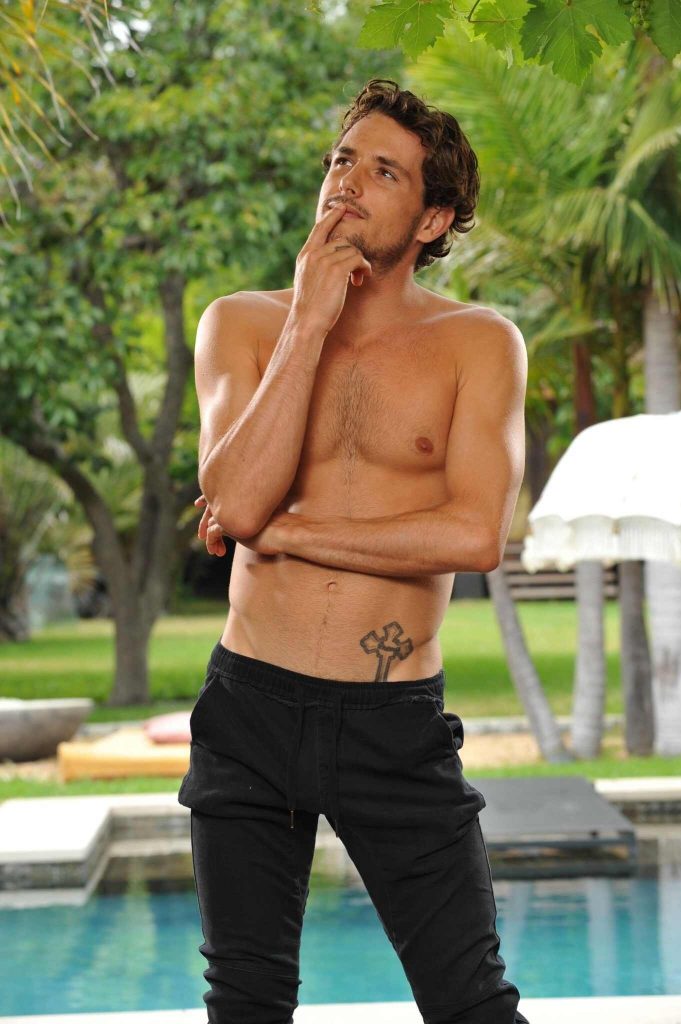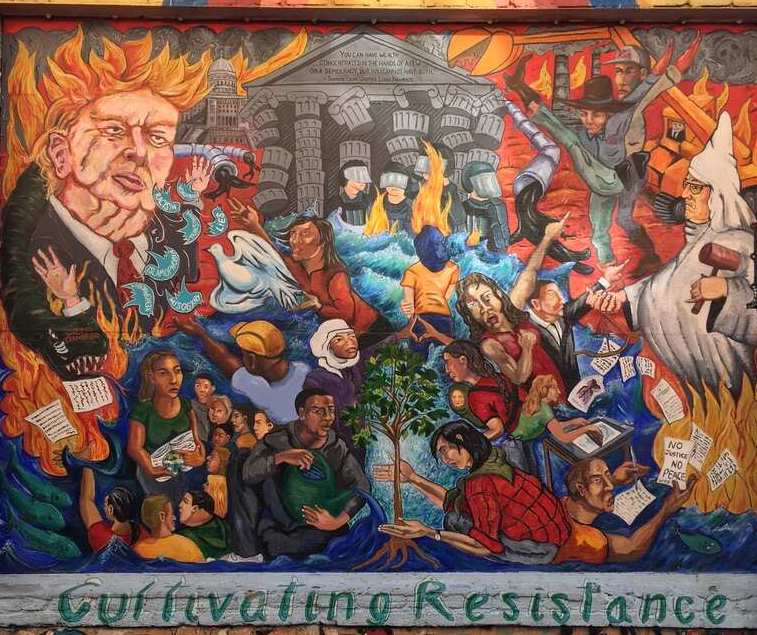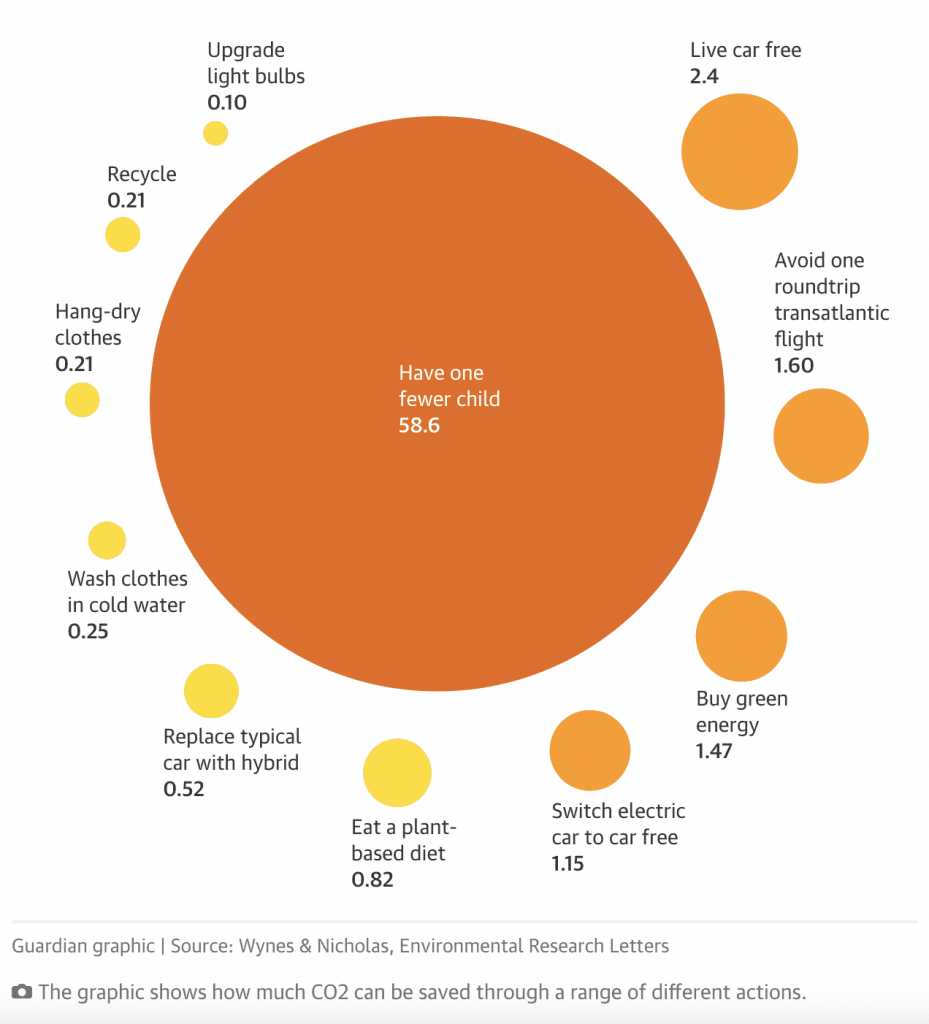Paddling a canoe through a flooded forest path, you come upon a half-submerged dragon sculpture. Its wooded scales crawl the length of a school bus through the lush vines and moss. Winter has quietly reclaimed Dragon Plaza, but the structures vibrate with the phantom joys of my favorite annual festival. Welcome to Oregon Country Fair in the off-season.
There’s no easy way to describe this 54-year-old event to the uninitiated. Sure, it’s a multiday festival of music, vaudeville, parades, art, and costumes—a midsummer celebration of tens of thousands of Pacific Northwest hippies (among others) set in a forest in Veneta, Oregon.
But to the elders, crews, camps, and Fair Families (by choice and by blood), OCF is a cherished ritual, a holiday, a reunion, an annual shaking of the dust off of one’s soul. Some folks rarely see their campmates or crew members outside of these hallowed grounds but come together year after year to set the pieces in motion.
Oregon Country Fair feels more like a living organism than a festival, both in how it’s run and its centrality in the lives of many. An all-volunteer community of various crews ensures the land is free from winter debris, the signage is clear, the proper wristbands are distributed, the Honey Buckets are tended, the Ritz Sauna & Showers are ready to receive dusty Fairgoers, the stages have passed their soundchecks, the sculptures and other art installations are erected, the artisan and vendor booths are arranged, the event security is gentle (yet authoritative), and world-class medical professionals are on-hand 24/7 at the White Bird Medical Clinic.
At the event in July 2022, two miracles tested just how well the beautiful, diffuse all-volunteer chaos at Oregon Country Fair actually works.
On the Thursday night preceding the three-day festival, we were watching our friends perform on the Ritz Sauna & Showers stage. The Ritz is one of the most unique experiences at Fair. There are few opportunities in prudish America to gallivant around naked with fellow humans underneath gorgeous Haida-style carvings and the stars, listening to live music, where performers are often nude, too.
Jon had just finished a stint in the sauna when he had an intense urge to lie down. He knew it would be inappropriate to pass out among the multi-tiered, chanting, and swaying masses, so he exited the sauna and attempted to make it to the bench where I was seated with a friend enjoying the concert.
Suddenly, we heard a loud crack, and someone screamed, “He’s down!” The music stopped, and there was a lifeless body on the ground behind me. Our friend Jody shouted, “It’s Jon!” I rushed to his side, and there began the longest 20 seconds of my life. He was completely unconscious, bleeding profusely from a deep wound gushing blood above his left eye where his head had hit the bench. I thought he was dead. People regularly slip in the shower and lose their lives. I felt panicked and nauseous from all of the blood.
Naked Fairgoers stood around us when one man (Dr. Jeff) rushed over and began administering triage.
Jon’s eyelids began to flutter, and he awoke to Dr. Jeff holding a towel against the gash, me, and our friend Jody holding his hand. The Ritz immediately contacted the nearby White Bird Clinic. Within minutes, they had a team of medical professionals there to help transport him to the on-site clinic for evaluation.
When he was ready, Jon stood up with our assistance and was able to walk with the team. Dr. Andy, normally an ER doctor, was wearing a pink tutu, and another medical professional named Sarah accompanied us into a decent-looking surgical room. The team got to work quickly, giving Jon a complex, multilayered web of stitches that made him look nearly normal.
Since the gash was down to his cranium, I thought for sure we’d have to take an ambulance and our Fair would be over, but this all-volunteer team masterfully sewed up his face and gave us instructions for the subsequent days and weeks. Jon’s eye was swollen shut the following morning and black as a starless sky, but he could still work his security shift the next day and all days afterward. He was even in good spirits.
What was remarkable about this experience was not only the technical skill of the Fair Family volunteers but their attitudes: they expressed that they loved offering their professional gifts for free in this environment, removed from the normal hassles of billing and administration. They could practice the purest form of medicine absent these real-world constraints—they were there to take care of people.
And as a result, we received exceptional medical care in the middle of the forest at no cost. In a way, there was no better place Jon could have cracked his head open. Miracle number one.
The following day, I’d barely caught my breath from the night’s excitement, when another disaster struck: I bought cookies for some stilt-walking Fairgoers and dropped my wallet in the swirling dreamlike chaos of “The 8”—the infinity path along which Fair takes place.
I had $250 in cash, all of my cards, and ID—a real issue since I was leaving for Alaska the following week. I took a breath and decided not to let this misfortune ruin my Fair. Instead, I spent the next 36 hours wandering the 8, running into friends, letting my ears and eyes be drawn to parades and performances, spontaneous and scheduled.
Although Fair attracts tens of thousands of people, I remained confident that the grounds transport folks into another world where our better natures shine. In this realm beyond the mundane realities of the stock market and Twitter and taxes and wars, the loving essence of humanity reigns supreme. I treated this incident as if I’d lost my wallet in my own house. I had no doubt that it would eventually be returned to the Odyssey, the central lost-and-found station at the heart of the 8.
After a couple of days, my faith in the goodness of Fairgoers paid off: my wallet did turn up at the Odyssey, all of my cash and cards intact. Our second Fair miracle!
When I first camped at Fair in 2018, it was clear that the first weeks of every subsequent July would be dedicated to this annual event. There’s nowhere I’d rather be that time of year, probably for the rest of my life.
The joy of Fair is that for a few days, the masks come off, and a primordial joy erupts. This lush forest full of unique villages taps into parts of myself that are otherwise dormant. Xavanadu and Chela Mela vibrate with colorful art installations and themed parades. Energy Park educates us about renewable resources and the importance of conservation. The Ritz Sauna & Showers taps into our awareness that without our clothes, we’re all just animals of the same species, enjoying the pleasure of bathing after long dusty days wandering the 8.
The labyrinthine paths connecting camps each carry their own magic. The spontaneity of connections, meeting eyes with strangers, lighting their smiles with my own, and knowing that we’re all in this moment together. I have the desire to be everywhere across the grounds all at once. The Fair spirit embodies free expression, creativity, acceptance, and love, but these words ring hollow next to the magic of walking the grounds in the thrumming hive of joyful performance. Sorrows feel drowned in an ocean of music, art, and elaborate costumes. The absence of rigid social constraints makes folks blossom, and the heaviness of worries is lifted. The ability to live in the present moment is restored, and overall, the magic of Fair is its humanity.
For me, these elements drastically outweigh many of Fair’s challenges: the messy logistics, generational politics, the ethical considerations of hosting the event on native Kalapuya lands, scattered accusations of colonialism and cultural appropriation, the overindulgence in drugs (mainly psychedelics), and the aggressive mosquitoes.
In reflection, OCF amplifies the core spirit that made Jon and I want to move to Eugene: the vibrant colors, experimental style, kindness, environmentalism, the low barrier to participation, the humble artists producing world-class work, the roughness around the edges like a beloved hardback book, the witchy and pagan vibe, and the radically inclusive community of the Pacific rainforest.
I lost my wallet in a crowd of thousands, and my partner got 7 stitches above his left eye—and it was still one of the best weeks of our lives. In the immortal exultation of one of my Fair friends: “Shit the fuck yeah!”
